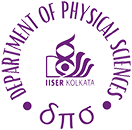𝗣𝗮𝘁𝘁𝗲𝗿𝗻𝗶𝗻𝗴 𝗽𝗿𝗼𝘁𝗲𝗶𝗻𝘀 𝘄𝗶𝘁𝗵 𝗹𝗮𝘀𝗲𝗿-𝗴𝗿𝗼𝘄𝗻 𝗺𝗶𝗰𝗿𝗼-𝗯𝘂𝗯𝗯𝗹𝗲𝘀: 𝗮 𝗽𝗼𝘀𝘀𝗶𝗯𝗹𝗲 𝗻𝗲𝘄 𝗿𝗼𝘂𝘁𝗲 𝘁𝗼𝘄𝗮𝗿𝗱𝘀 𝗹𝗼𝘄-𝗰𝗼𝘀𝘁 𝗱𝗶𝗮𝗴𝗻𝗼𝘀𝘁𝗶𝗰𝘀 𝗮𝗻𝗱 𝗯𝗶𝗼𝘀𝗲𝗻𝘀𝗶𝗻𝗴
Patterning biomolecules (including proteins such as antigens and antibodies) in pre-designed, parallel architectures can be a game-changer in rapid, inexpensive diagnostics. However, typical patterning methodologies, including top-down approaches such as photolithography and e-beam lithography, or bottom-up approaches such as solgel nanofabrication, molecular self-assembly, and DNA-scaffolding - all have limitations in efficacy for various reasons ranging from damaging the biospecimens to being slow and inflexible.
In this context, Microbubble lithography (MBL) is a comparatively recent (about a decade-old) micro-patterning method that uses laser-generated and translated microbubbles to self-assemble and pattern materials of choice in real time. Thus, MBL has been used to pattern diverse mesoscopic organic and inorganic materials, allowing for various applications including the fabrication of plastic electronics, catalytic chips, and even biosensing. However, in spite of its success in patterning mesoscopic entities, MBL has not yet been employed in developing continuous patterns of living organisms. This is primarily due to the high temperatures associated with a bubble nucleated due to heat generated by tightly focusing a laser – which is at the heart of this technique.
In this paper, we report the successful creation of a strategy for immobilizing diverse biospecimens on transparent substrates using MBL. Thus, we develop a heterostructured platform made up of a scaffold to form microbubbles, a crosslinker to facilitate adherence, and finally the concerned immobilized biospecimen. Our deployment of fast laser translation speeds ensures no temperature-induced damage to the biospecimens since their contact time with the microbubbles is less than a hundred milliseconds. Our patterned biospecimens cover a wide range of biological macromolecules, such as reporter proteins, bacterial samples, and viruses at varying concentrations. Most importantly, we also performed experiments to determine the activity of the biospecimens, especially bacterial species and virus strains, post patterning – and obtained conclusive evidence of them retaining their vegetative activity.
Overall, this study sets the groundwork for manufacturing multilayer heterostructures of living matter using MBL, and may open a new paradigm in designing bioelectronic chips, and in fast, inexpensive, and even parallelized biosensing and diagnostics of pathogens, leveraging and highlighting the ubiquitous nature of MBL in terms of patterning ‘everything mesoscopic’.
Article details:
Title: Biologically Active Micropatterns of Biomolecules and Living Matter Using Microbubble Lithography
Authors: Anand Dev Ranjan, Sucharita Bhowmick, Arnab Gupta, Amirul Islam Mallick, Ayan Banerjee
#Research Highlight
Posted on: July 12th, 2024

